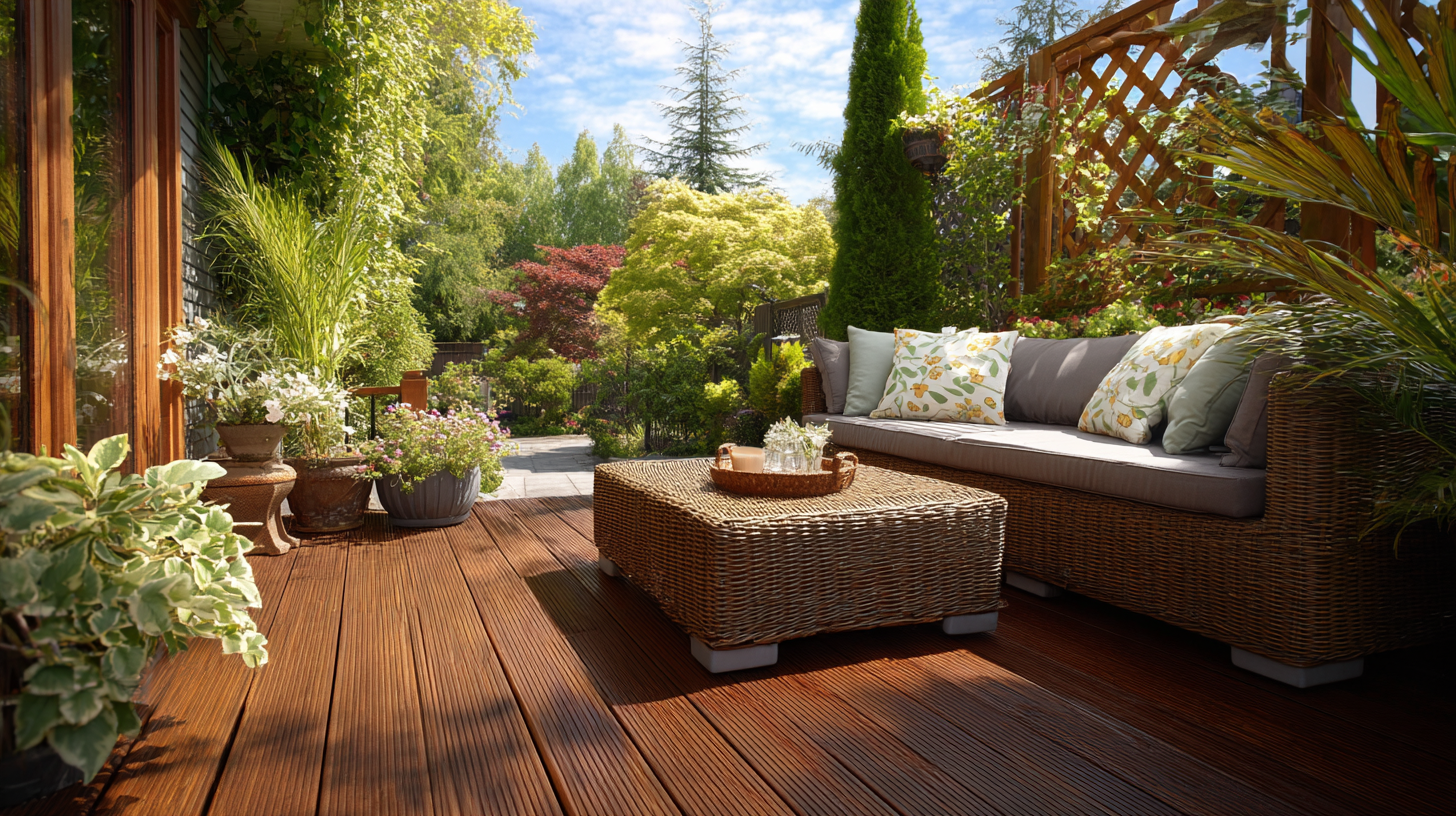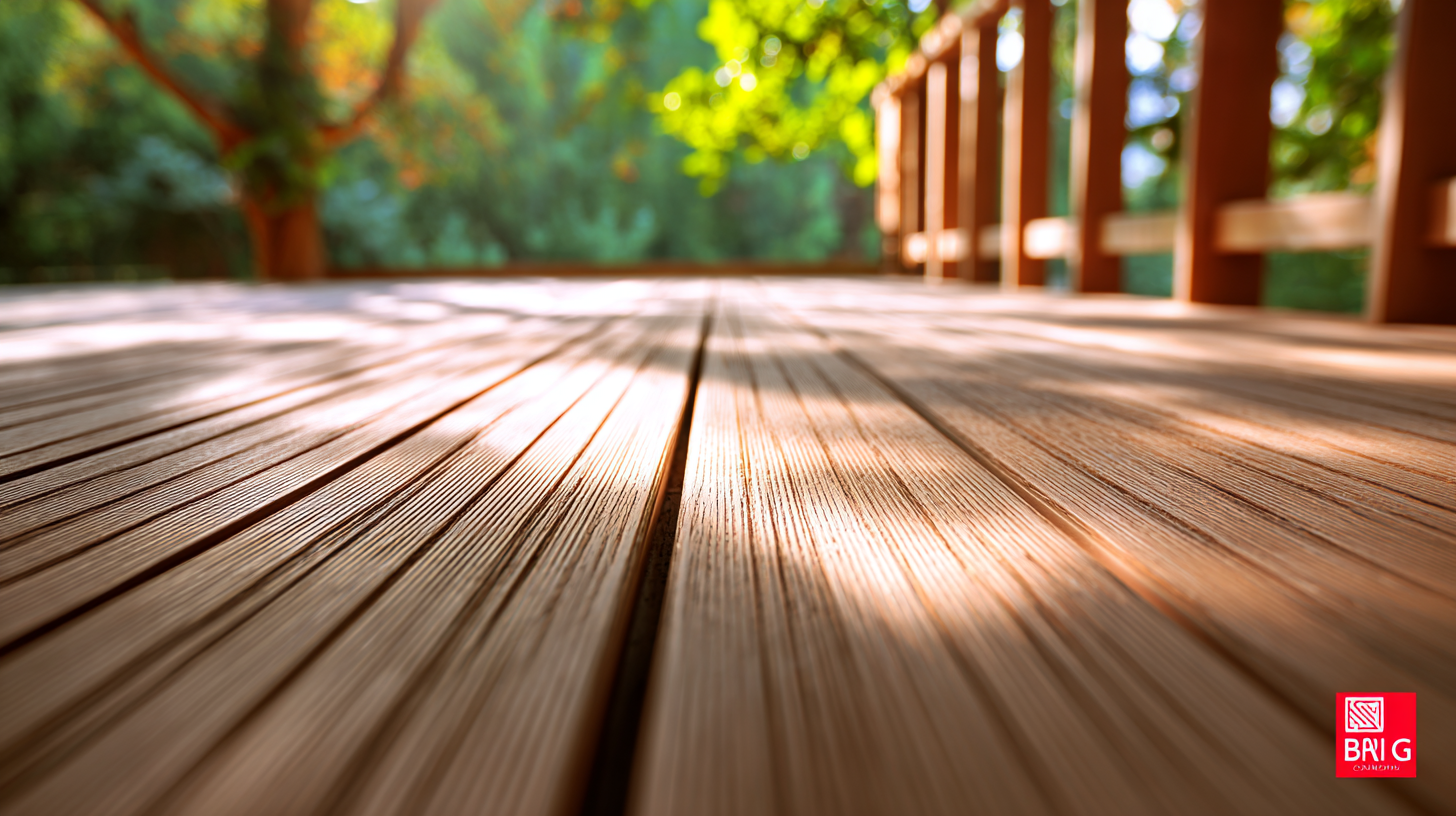In today's fast-paced global marketplace, selecting the right material for your decking project can be a daunting task, especially when it comes to choosing the ideal Decking Composite. As the demand for sustainable and durable outdoor spaces increases, manufacturers are stepping up to provide innovative solutions that meet diverse needs. This guide aims to illuminate the intricacies of Decking Composites, showcasing the pride of Chinese manufacturing while addressing the importance of global sourcing.

With insights on quality, performance, and aesthetics, we delve into a world where exceptional materials meet internationally recognized standards, empowering you to make informed decisions for your decking solutions.
Join us as we explore the features and benefits of Decking Composites that will elevate your projects and set them apart in the competitive landscape.
When it comes to global sourcing for decking materials, composite decking emerges as a leading choice for numerous reasons. According to a report by Grand View Research, the global composite decking market is expected to reach USD 5.4 billion by 2025, reflecting a compound annual growth rate (CAGR) of 12.0% from 2018 to 2025. This indicates a robust demand for high-quality, sustainable building materials that meet diverse sourcing needs across different regions.
One of the key benefits of composite decking is its durability and low maintenance requirements. Unlike traditional wood decking, which can splinter, warp, or rot, composite materials are engineered to withstand various environmental conditions. Reports from the U.S. Forest Service suggest that composite decking can last over 25 years, significantly reducing the need for replacements and repairs. Furthermore, composite decking is often made from recycled materials, aligning with global sustainability goals, which is an essential factor for many businesses today. By choosing composite over wood, global sourcing managers can contribute to a more sustainable supply chain while ensuring long-lasting performance for their projects.
 When selecting composite materials for decking, durability and aesthetics are paramount. The best composites not only withstand the elements but also enhance the visual appeal of your space. Look for materials made from a blend of wood fibers and recycled plastic, as they combine strength with natural aesthetics. Brands that provide a variety of colors and textures allow for greater customization, ensuring that your decking compliments the overall design of your environment.
When selecting composite materials for decking, durability and aesthetics are paramount. The best composites not only withstand the elements but also enhance the visual appeal of your space. Look for materials made from a blend of wood fibers and recycled plastic, as they combine strength with natural aesthetics. Brands that provide a variety of colors and textures allow for greater customization, ensuring that your decking compliments the overall design of your environment.
Tips: Consider investing in boards that have UV protection and are resistant to fading. This will maintain the beauty of your decking over time, even in harsh sunlight. Additionally, check for warranties that cover not just structural integrity but also color retention, giving you peace of mind for years to come.
Choosing the right composite also means being mindful of maintenance requirements. Opt for materials that require minimal upkeep to keep your deck looking great. Composites with a smooth finish can help reduce dirt accumulation, making cleaning effortless. Ensure the product you choose aligns with your sourcing needs for long-lasting performance.
When considering the cost-effectiveness of decking composites, analyzing lifespan and maintenance requirements should be at the forefront of your decision-making process. According to a report from the American Composites Manufacturers Association (ACMA), composite decking products can offer a lifespan of 25 to 30 years, significantly outlasting traditional wood options, which average around 15 years. This extended lifespan not only translates to lower replacement costs but also to reduced resource consumption over time.
Maintenance is another critical factor that influences the total cost of ownership for decking materials. Research by the National Association of Home Builders (NAHB) indicates that composite decking requires minimal upkeep compared to wood. While wood decks typically require annual sealing and staining, composite materials are designed to withstand the elements with little more than occasional cleaning. The reduced maintenance effort can save homeowners approximately $1,500 over ten years, making composites not only a durable choice but also a financially savvy one in the long run.
When navigating the complexities of global sourcing for composite decking, one must consider not only quality but also the reliability of suppliers. According to a recent report by Grand View Research, the global composite decking market is expected to reach $5.5 billion by 2028, with a compound annual growth rate (CAGR) of 10.3% from 2021 to 2028. This increases the need for careful supplier assessment to ensure sustainability and performance standards are met.
Finding reliable global suppliers involves evaluating their production capabilities and adherence to international quality standards. The Wood Plastic Composite (WPC) market, which represents a significant portion of composite decking, has witnessed a rise in demand for eco-friendly materials and practices. A study by MarketsandMarkets highlights that 40% of consumers prioritize sustainable sourcing. Thus, companies seeking composite decking solutions must prioritize partnerships with suppliers who demonstrate a commitment to sustainability, innovative manufacturing processes, and transparent supply chains. By aligning sourcing strategies with these industry insights, businesses can secure dependable partnerships that cater to the growing demands of the decking market.
| Supplier Region | Composite Material Type | Sustainability Rating | Price per Square Foot | Lead Time (Weeks) |
|---|---|---|---|---|
| North America | PVC | A+ | $5.00 | 4 |
| Europe | Wood-Plastic Composite | A | $6.00 | 6 |
| Asia | Bamboo Composite | A+ | $4.50 | 5 |
| South America | Recycled Plastic | B | $4.00 | 3 |
| Africa | Composite with Natural Fibers | A | $5.50 | 7 |
When embarking on global sourcing for decking composites, sustainability should be a top priority. Eco-friendly composite options not only contribute to environmental conservation but can also enhance the appeal of your projects. Many modern composites are made from recycled materials, such as plastic and wood fibers, which reduces landfill waste and lowers the demand for virgin resources. Choosing products with a high recycled content helps to create a circular economy, where materials are reused and repurposed, minimizing environmental impact.
Another important aspect is the manufacturing process. Look for composite suppliers that utilize sustainable practices, such as using renewable energy sources and implementing water conservation measures in their production facilities. Certifications, such as FSC (Forest Stewardship Council) and Green Seal, can guide you towards companies that adhere to rigorous environmental standards. By selecting eco-friendly decking composites, you're not only making a responsible choice for the planet but also ensuring that your projects resonate with a growing consumer demand for sustainability.

